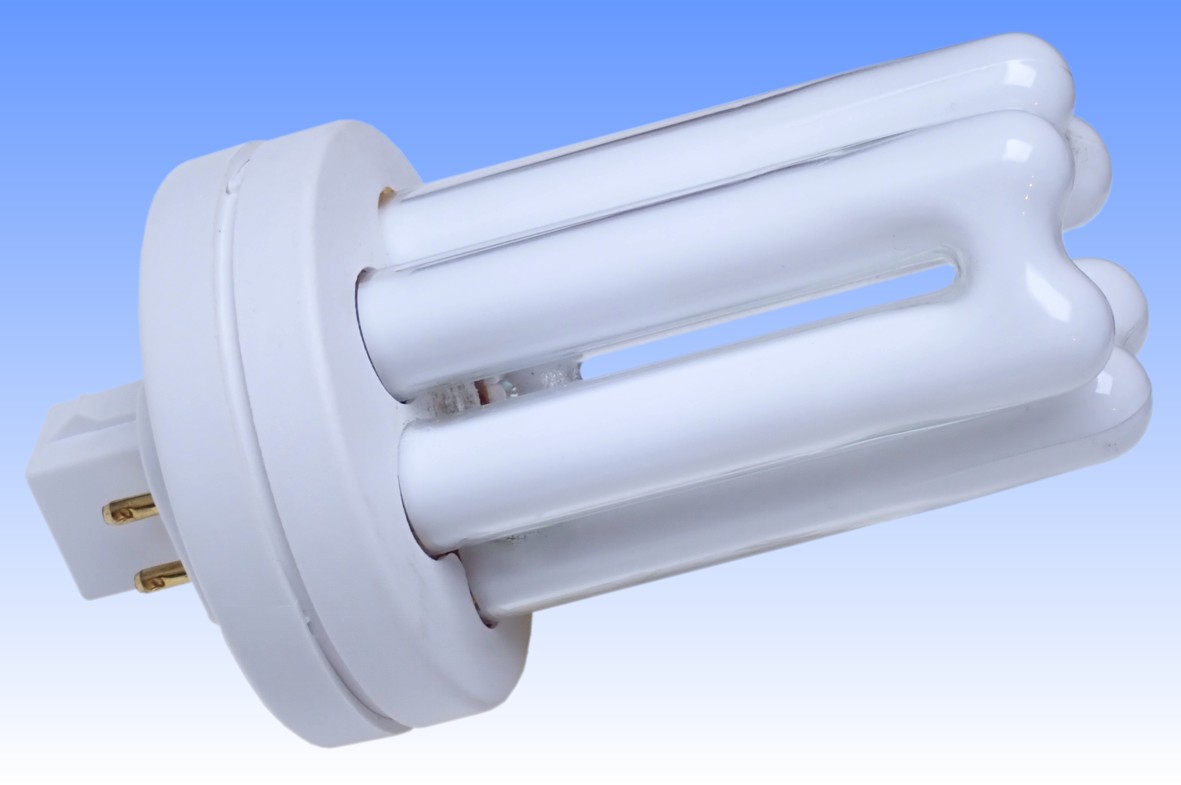
|
GE Compact Fluorescent Biax T/E 13W/827 |

Approximately 5% decrease in luminous flux was claimed vs the earlier Biax D lamps, due to a small increase in light entrapment between adjacent limbs of the discharge tubes. Both 2-pin versions having internal starters were launched from the outset, as well as this 4-pin variant for use with electronic ballasts. All of the original series Biax T lamps made use of the unique dimpled end bridge design to achieve a cold spot to maximise lamp efficacy, which had been developed several years earlier by Tungsram.
Incidentally, this first version from GE made use of an unusually large diameter plastic base. The reason was to match a similarly proportioned adaptor unit comprising an electronic ballast terminated with a bayonet or Edison screw lamp cap, thereby allowing a retrofit for incandescent lamps. This was found not to be convenient for downlight luminaires, in which the hole in the reflector around the lampholder should be as small as possible. Following the launch of the Osram Dulux T lamps which featured much smaller bases, GE also followed suit and superseded this lamp with a smaller diameter version around 1998.




| Manufacturer: | GE Lighting | |
| Lamp Power: | 13 Watts | |
| Lamp Current: | 0.165 Amps | |
| Lamp Voltage: | 91 Volts | |
| Cap Type: | GX24q-1 | Valox PBT |
| Bulb Type: | T-12.5 | T-4 in eighths/inch |
| Bulb Finish: | CAT, BAM, YOX phosphors | Soda-lime glass |
| Electrodes: | Triple Coil Tungsten | Triple carbonate emitter |
| Atmosphere: | Argon + Hg | |
| Luminous Flux: | 840 lm @ 100h | 710 lm mean |
| Luminous Efficacy: | 64.6 lm/W @ 100h | 54.6 lm/W mean |
| Colour Temperature & CRI: | CCT: 2700K | CRI: Ra 82 |
| Chromaticity Co-ordinates: | CCx: 0.460 | CCy: 0.414 |
| Lifetime: | 10,000 hours | |
| Warm-up & Re-strike Time: | 2 minutes | Instant |
| Burning Position: | Universal | |
| Overall Length: | 108 mm | 41/4/sub> inches |
| Lighted Area: | ||
| Mass: | ||
| Factory: | Nagykanizsa | Hungary |
| Date of Manufacture: | 1994 July | Date Code: 7P |
| Original Value: | GB £9.32 (1994) | |

